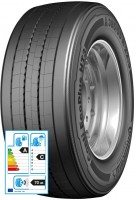TPMS trends in emerging markets
The US mandated TPMS installation in new cars some time ago and we and we all know that the same will happen in Europe in November this year, but what about the emerging markets? Ask any market analyst and you will learn that China in particular is set to overtake the US and become the world’s largest economy in the next few years. Many sources suggest the People’s Republic is already there in terms of car production and – as a consequence – tyre manufacturing. So what about TPMS take-up and manufacturing infrastructure in this market in particular?
TPMS adoption in emerging markets and especially China appears to be following development of the automotive market in general and the tyre market in particular. For years car production was dominated by established Western firms. Then came the Japanese, who have more recently been challenged by the lower-cost, efficient and extremely large scale South Koreans. Rapidly accelerating on the heels of all who went before them are the Chinese. As far as TPMS is concerned South Korea comes next after the US (2004) and Europe (2014) when it mandates TPMS. Indeed the company expects the roll-out to be completed by 2015.
So what about the so-called BRICs (Brazil, Russia, India and China)? An IQPC survey conducted for the Intelligent Tire Conference in September 2013 suggests that 53 per cent of industry experts believe that TPMS will be standard on new vehicles in the BRIC countries in three to five years. A further breakdown of the numbers reveals that 70 per cent of OEM and vehicle manufacturer respondents agree. Component suppliers themselves are not so optimistic, with 44 per cent saying it will take six to eight years for TPMS to become a standard in the BRIC markets.
But with research and development budgets continuing to increase in Asia, it wouldn’t be too much surprise if things developed quicker. In order to illustrate this point, the same survey revealed that in the last quarter of 2013 78 per cent of respondents’ companies were investing at least as much as last year in the Asian tyre market and 24 per cent are investing more. 83 per cent of respondents said their companies were spending at least as much on R&D in general in 2013 as in 2012 and nearly 41 per cent are spending more.
Direct or indirect TPMS in the BRICs?
So if TPMS is expected to be adopted in six to eight years, which we must remember is 30 per cent faster than it took Europe to follow the US in this respect, what technology will be taken on. With China being the largest economy, population base, automotive and tyre market, the perspective from the People’s Republic is of particular importance.
According to the ITC information, China may choose to pick a winner between the two competing TPMS technologies and doing so would have an impact on the TPMS market as companies not producing the winning technology will have to scramble to gain access to the market. There is clearly a degree of uncertainty about which way China will go, but two-thirds of component manufacturers strongly told questioners that they believe direct TPMS will become the standard.




Comments